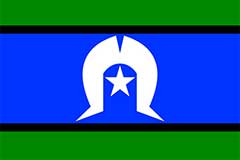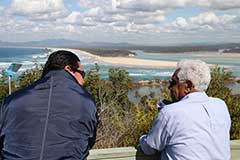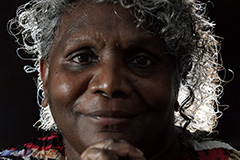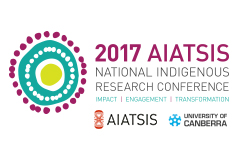The best approach to Indigenous family history research is to start with yourself and work backwards through the generations. But many people just want to look for particular people in their family tree and to find out more about them.
This type of research will put you in the same position as a stranger doing research on your ancestors.
- You will only have access to historical information that is publicly available.
- You will not be able to gain access to information where you have to prove your relationship to the person you are researching.
This may be frustrating if the reason you want to do research on this person is to prove your relationship to them.
What information do you need?
Our experience at the Family History Unit is that people may have one or more names, some places where the people lived, and perhaps information about when and where they died.
If you are in this situation:
- Write down everything you know about the person and try to be as specific as possible about names, dates and places.
- Think about all possible variations of the names and write these down.
- Ask anyone in your family who might have more information or might have photographs or documents. See Sources at home.
- Try to find out if the people lived on missions or reserves or had anything to do with government or church protection or welfare.
Where do you start?
- Start with BDM historical indexes – try every possible spelling or name variation. Try very broad searches (just the last name) and scroll through all of the results. If you find something great! If you don’t, either the person was never registered, or they used a different name, or the name was misspelled, or the records were lost or destroyed.
- Then do name searches and place in the following indexes of Aboriginal and Torres Strait Islander people:
- Search the Aboriginal and Torres Strait Islander Biographical Index (ABI)
- Search the Mura® catalogue
- Centre for Indigenous Family History Studies (CIFHS)
- If you think there is a chance that one of the people you are researching might have done military service, search the National Archives RecordSearch database.
- Next dive deeply into the Indigenous family history resources available for each state and territory (see Where to get help). These guides will give you many ideas and resources – it will take time and persistence to work.
If your name searches don’t find the exact people you are looking for, they may locate people with same surname in the same location. Depending on the timeframe and how common the name is, others with the same surname may be in the extended family. These search results might also give you an idea of places that may be significant.
- You can also contact the Aboriginal and Torres Strait Islander family history team in the relevant state or territory. See Where to get help for the state or territory.
Researching places rather than names
Sometimes the best way (or the only way) to find out more about an Indigenous ancestor is to do in-depth research on the places where they lived. Reading histories of places, or histories of people who lived in those places may lead you to information about your ancestor (or at least information about what their lives may have been).
- The two AIATSIS searches (ABI and Mura®) will give you a list of material held in the AIATSIS collections about that place. The best material would be a life story or the history of a family or a mission. You can then read about Indigenous people who may have lived at the same time and in the same place as the person you are looking for. In some cases, people in your family will be mentioned in the book.
- The CIFHS search on place will enable you to see what if any people are recorded at that place in the CIFHS collection. If you find people at the same place and time, you can then try searching for their names in AIATSIS indexes.
Other sources of information about places are:
- Google search on placename + Aboriginal – you may find reports or community websites or blogs or other information about the Indigenous history of that place. You are also likely to find language and group names associated with that place.
- Many government bodies publish environmental reports on places that include a significant section on the Indigenous history. These histories will name Aboriginal organisations and individuals who contributed information to the report.
AIATSIS’ Aboriginal Australia map is also a good source of information about the people and language groups associated with specific areas.
Once you have a language/group name, you can search for Native Title Claims filed by that group. Sometimes the information about a claim includes a list of claimants and their line of descent from an original traditional owner. See: AIATSIS Pathways Thesaurus for information about languages and groups.
Extend your search net to more general resources
- Search the National Library of Australia’s Trove newspaper database (this is a long shot, but occasionally you will find valuable information like divorce announcements).
- Search a genealogical database like ancestry.com.au or FindMyPast. Both of these require subscriptions, but some local libraries or local family history groups will help you. You might find information in Electoral Rolls.
Get help from government record agencies
If you haven’t found information in the places listed above that are easily accessible to anyone, you can also try to get access to records that have �?access conditions’. This means that you won’t be able to access the records unless you can prove some relationship to the person.
- Contact the government departments that assist Indigenous Australians to do family history research (see Where to get help for the state where your ancestor lived).
Concerns about privacy and personal records – access conditions
It is a source of great frustration to many Indigenous family history researchers that they cannot get access to records they know must be there about their families. Mostly these are government records and mostly they are held by government record authorities such as archives and birth, death and marriage registries.
The record holders must balance the need to protect the privacy of the people records are about – they often contain very personal information – with the needs of the public to have access to information.
If you do find yourself feeling frustrated about access conditions, take a minute to imagine that these are records about you and that the person sitting next you on the bus has just tried to get access to them!
Depending on your age and the age of the records you are seeking, you may find that in 5 or 10 years the records become �?open’. Each year there is a new release of records that fall within the 30, 75, 100 year limit. See Sources – birth, death and marriage records for information about Access Conditions.




